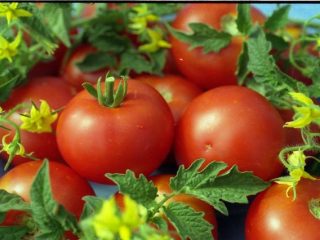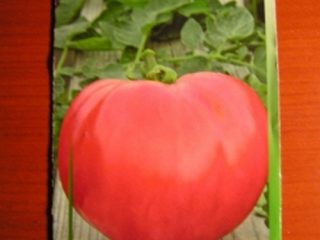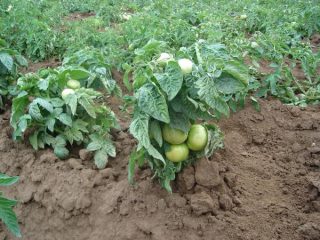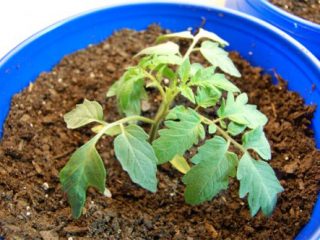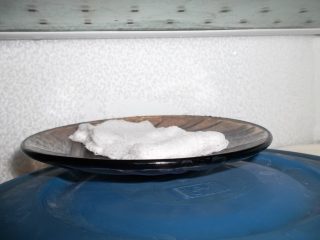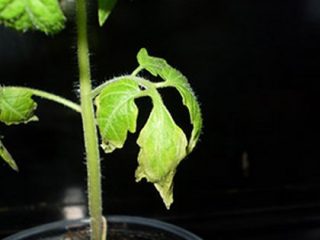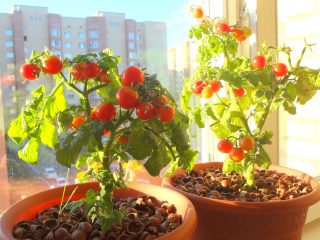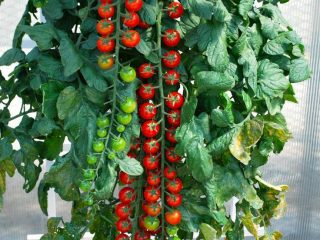Content
Tomato Stump is a hybrid, about the origin of which there is practically no information. The description states that it has a high yield - up to 12 kg per square meter. Judging by the reviews, the culture is unpretentious in care. Bushes can be grown both in greenhouses and in open ground.
History of origin
It is known that this is a first generation hybrid (F1). It was obtained on the basis of crossing; the variety is not included in the register of selection achievements. Stump tomato seeds can be found on the market. The description states that this is a very productive variety.
Description of the tomato variety Stump
The Stump tomato is a semi-determinate hybrid with short internodes. Its upper growth is limited - it stops after the formation of a certain number of inflorescences (usually from 8 to 12).
The first flowering raceme appears above the 7-9 leaf, on the lateral shoots - above the third or fifth leaf. Internodes are short, the distance is up to 18 cm (for comparison: indeterminates have almost twice as much: from 25 to 30 m).Tomato Stump is a medium-sized plant, the height of which is 100-120 cm.
The fruits are flat-round, red in color, weighing on average from 140 to 160 g. Tomatoes have an attractive appearance and a glossy surface. The aroma is bright, pleasant, the taste is balanced, the flesh is juicy, but not watery. The main wave of fruiting occurs in July and August. If the second half of summer and the beginning of autumn are warm, then Stump tomatoes can be harvested in the first ten days of September.
Characteristics of tomato Stump
The hybrid is quite resistant to unfavorable climatic conditions, so it can be grown in most Russian regions - from the middle zone and North-West to the Urals, Siberia and the Far East. The description of the Stump variety states that all methods of agricultural technology are allowed - under a film cover, in a greenhouse or in an open garden bed. But to get a good harvest, it is preferable to grow the crop indoors.
Tomato yield Stump
The productivity of the Stump tomato is very high - 2.5-3 kg per plant. To achieve such figures, it is recommended to use fertile, loose soil for growing tomatoes. The seedlings must have enough sunlight, which is especially important for regions with short summers.
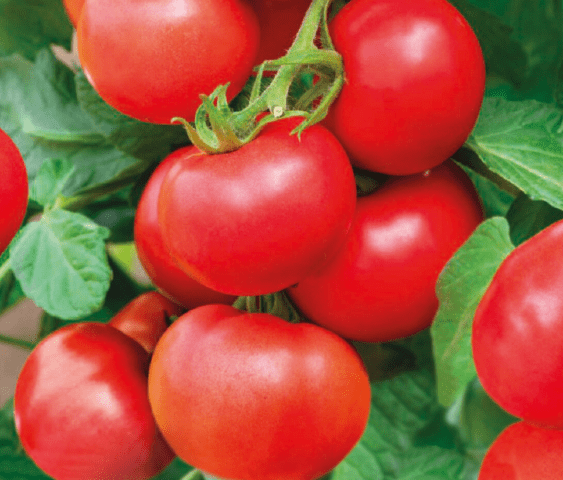
According to the ripening period, the Stump tomato belongs to the early ripening (early) hybrids
The fruits reach technical ripeness 90-100 days after germination. Thanks to this, they have time to ripen on the bush, without ripening.
Resistance to diseases and pests
The Penh tomato is a hybrid, so it is immune to certain diseases. However, the risk of fungal infections, insects and other pests cannot be completely eliminated.Therefore, it is necessary to carry out preventive treatments even when grown in a greenhouse.
How to use
The purpose of Stump tomatoes is universal. They can be used fresh for preparing salads, vegetable appetizers, soups and main dishes. The fruits are predominantly medium in size, so they are also used for whole-fruit canning (salting, pickling). The transportability of tomatoes is good, so they can be transported over long distances, including to the place of sale or processing.
Advantages and disadvantages of tomato Stump
The description of the hybrid states that the bushes are “strewn with fruits, like a stump with mushrooms.” Along with high productivity, one can also highlight such advantages as good taste and attractive appearance. The fruits are quite shelf-stable and can be stored well in the refrigerator.
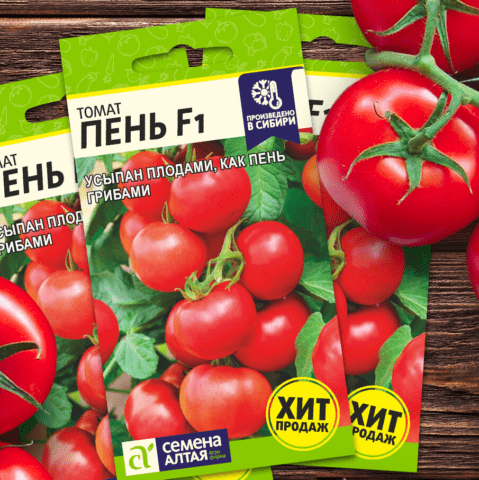
Hybrid seeds can be purchased freely
Pros:
- high productivity;
- good taste;
- attractive presentation;
- fast ripening times;
- no need for ripening;
- can be grown in different regions;
- keeping quality and transportability.
Minuses:
- seeds have to be purchased annually;
- the hybrid is not included in the state register; there is little information about it.
How to grow tomato Stump
Tomato Stump is grown in the traditional seedling way. Seeds are planted from mid-March to early April, depending on the climatic characteristics of the region. You need to focus on the fact that seedlings are transferred to open ground in late May - early June. At the same time, they can be transplanted into the greenhouse 7-10 days earlier.
Stump tomato seedlings are grown in common boxes. The soil can be purchased at the store or made independently on the basis of turf soil, humus (or compost), black peat and sand in a ratio of 2:1:1:1.The mixture is first disinfected by pouring it with a weak solution of potassium permanganate or keeping it in the freezer for several days.
Algorithm for planting and growing tomato seedlings Stump:
- The seeds are kept for several hours in a warm solution of Kornevin, Zircon or another growth stimulant.
- Planted to a depth of 1-1.5 cm with an interval of 4-5 cm.
- Spray with water from a spray bottle and cover with a film with holes or glass.
- Place in a warm (24-26 degrees) and well-lit place (south, east window).
- Water and ventilate periodically.
- After emergence of shoots, the film is removed.
- When 2-3 leaves are formed, the seedlings are planted in individual containers (it is better to use peat pots).
- After a few days, use “Baikal”, “Ideal”, “Kemira Plus” or another complex composition for seedlings.
- Two weeks before transplanting, the seedlings begin to harden by taking them to the balcony or outside.
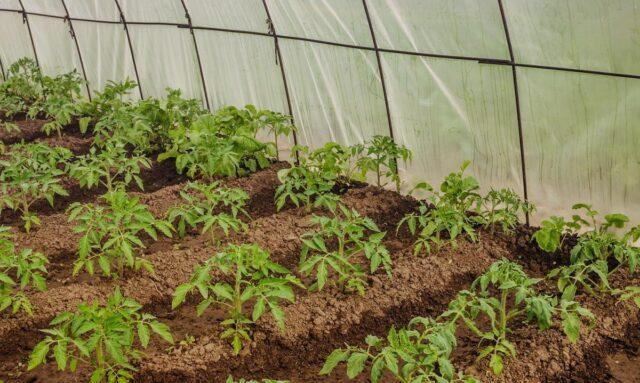
Better yields can be achieved when grown in a greenhouse
Tomatoes are planted in open ground. The stump is transplanted according to a 60x40 cm pattern. 3-4 seedlings should be placed per 1 m². In the future, their care is standard:
- Watering 2-3 times a week. Warm water should be used. It is preliminarily settled at room temperature (outside in the summer). The soil should remain only slightly moist. The watering norm cannot be violated.
- Fertilizers are applied every 10-15 days. The first time feeding is done a few days after transplantation. It is advisable to alternate complex mineral compositions and organic matter (mullein, droppings, infusion of freshly cut grass).
- After watering or heavy rains, the soil needs to be loosened. At the same time, you can do weeding.
- To help the soil retain moisture longer, straw, hay or other material is placed around the plantings.Mulch also serves as a good pest prevention measure.
- If the branches of the bushes begin to bend from the harvest, it is necessary to install a wooden peg or other support.
- Bush formation and pinching are carried out as necessary.
Pest and disease control
To prevent diseases and pests, it is recommended to treat Stump tomato seedlings a few days after transplanting into the ground with any fungicide:
- Bordeaux mixture;
- "HOM";
- "Fitosporin";
- "Maksim";
- "Skor."
To combat insects, it is better to use folk remedies, for example, an infusion of chili peppers, mustard powder, garlic cloves and greens, tobacco dust, and wood ash. In extreme cases, Stump tomato bushes are sprayed with insecticide solutions:
- "Fitoverm";
- "Match";
- "Aktara";
- "Vertimek";
- "Inta-Vir".
Attention! In the case of using chemicals, the last treatment of the Stump tomato bushes can be done no later than a week before harvesting the fruits.
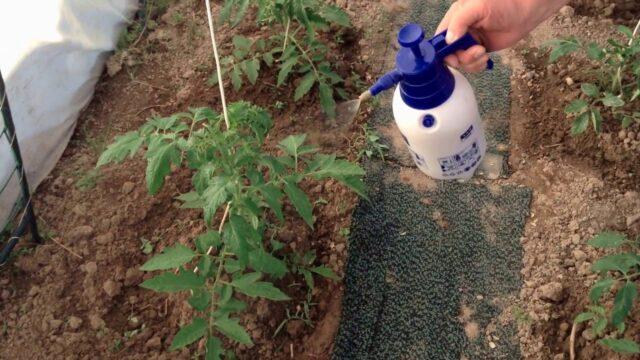
For prevention, at least one treatment with drugs is necessary.
Conclusion
Tomato Stump is an unpretentious, high-yielding hybrid, resistant to unfavorable conditions. It produces quite tasty tomatoes that reveal well in vegetable salads and pickling. If you follow agricultural techniques, even from a small garden bed you can reap a decent harvest.
Reviews from gardeners about the tomato Stump
